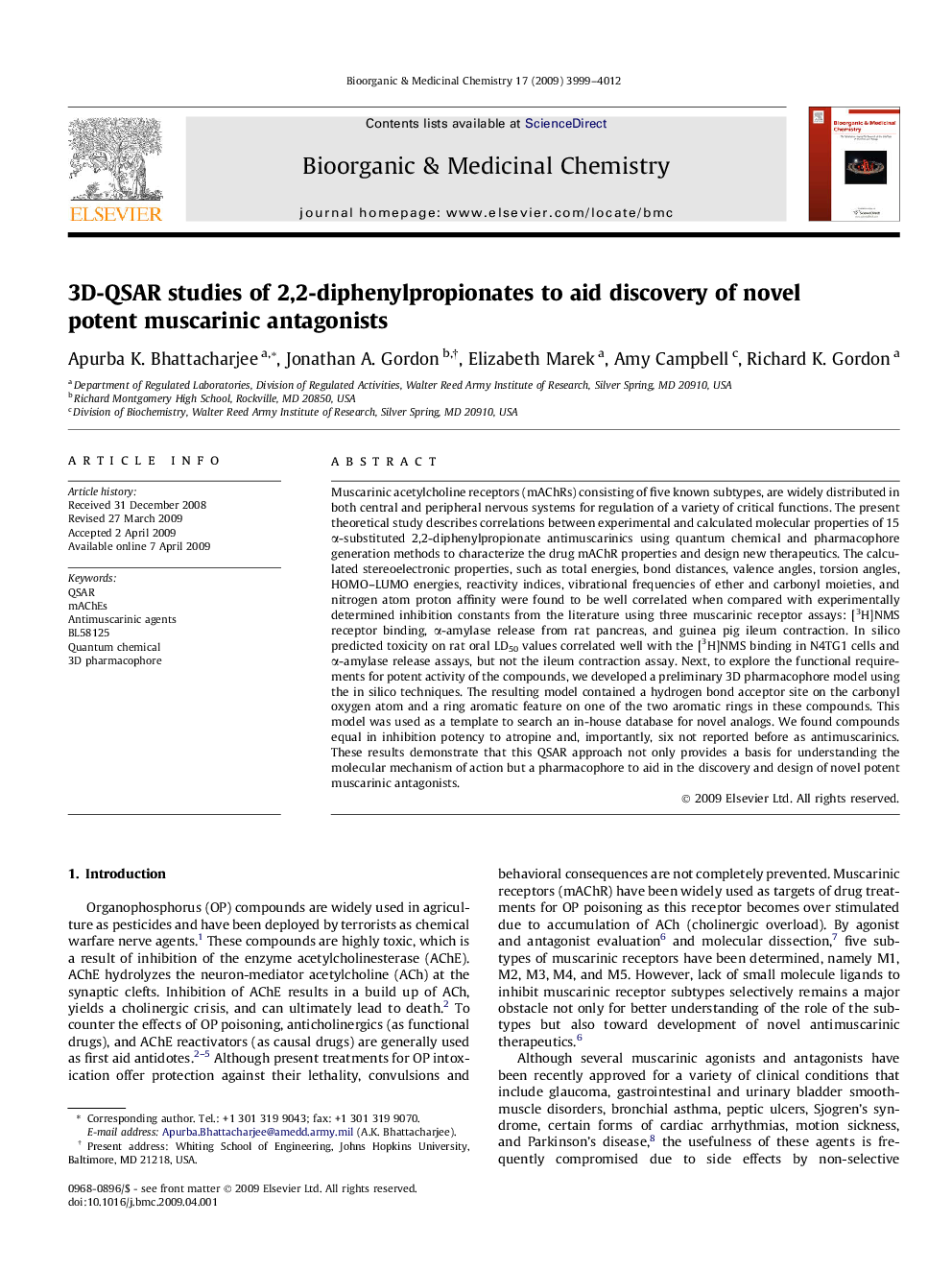| کد مقاله | کد نشریه | سال انتشار | مقاله انگلیسی | نسخه تمام متن |
|---|---|---|---|---|
| 1360479 | 981437 | 2009 | 14 صفحه PDF | دانلود رایگان |

Muscarinic acetylcholine receptors (mAChRs) consisting of five known subtypes, are widely distributed in both central and peripheral nervous systems for regulation of a variety of critical functions. The present theoretical study describes correlations between experimental and calculated molecular properties of 15 α-substituted 2,2-diphenylpropionate antimuscarinics using quantum chemical and pharmacophore generation methods to characterize the drug mAChR properties and design new therapeutics. The calculated stereoelectronic properties, such as total energies, bond distances, valence angles, torsion angles, HOMO–LUMO energies, reactivity indices, vibrational frequencies of ether and carbonyl moieties, and nitrogen atom proton affinity were found to be well correlated when compared with experimentally determined inhibition constants from the literature using three muscarinic receptor assays: [3H]NMS receptor binding, α-amylase release from rat pancreas, and guinea pig ileum contraction. In silico predicted toxicity on rat oral LD50 values correlated well with the [3H]NMS binding in N4TG1 cells and α-amylase release assays, but not the ileum contraction assay. Next, to explore the functional requirements for potent activity of the compounds, we developed a preliminary 3D pharmacophore model using the in silico techniques. The resulting model contained a hydrogen bond acceptor site on the carbonyl oxygen atom and a ring aromatic feature on one of the two aromatic rings in these compounds. This model was used as a template to search an in-house database for novel analogs. We found compounds equal in inhibition potency to atropine and, importantly, six not reported before as antimuscarinics. These results demonstrate that this QSAR approach not only provides a basis for understanding the molecular mechanism of action but a pharmacophore to aid in the discovery and design of novel potent muscarinic antagonists.
We correlated experimental and calculated molecular properties of 15 α-substituted 2,2-diphenylpropionate antimuscarinics using quantum chemical and pharmacophore generation methods and used the model to identify new antimuscarinic in our in-house database. Six new compounds not previously reported as antimuscarinics were characterized. The graphic shows the most potent compound, twofold greater than atropine, which was derived by our pharmacophore model and yet is not a 2,2-diphenylpropionate.Figure optionsDownload as PowerPoint slide
Journal: Bioorganic & Medicinal Chemistry - Volume 17, Issue 11, 1 June 2009, Pages 3999–4012